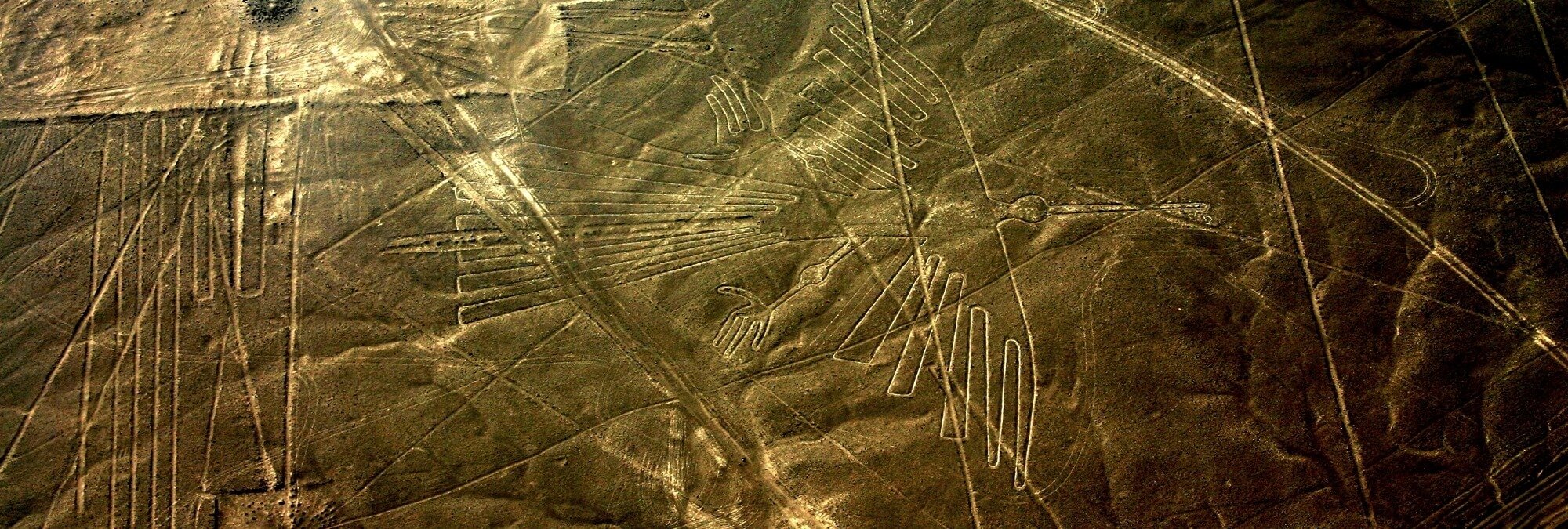Scientists were able to re-identify 16 bird geoglyphs from Peru’s mysterious Nazca lines. One drawing that was previously thought to be a hummingbird has been re-classified as a hermit.

Masaki EdaIn a new study, researchers re-examined 16 of the geoglyphs formed by the Nazca lines.
Researchers have unlocked another piece of the puzzle related to Peru’s ancient Nazca lines — and no, they still don’t think they were made by aliens.
Using enhanced techniques from multiple disciplines, a group of Japanese animal scientists re-examined and re-identified 16 of the bird geoglyphs that stretch across Peru’s desert plains, and have determined that many of the birds depicted in the ancient designs were actually species foreign to Peru.
Which gets us one step closer to figuring out why these birds were carved into the Earth 2,000 years ago.
“Until now, the birds in these drawings have been identified based on general impressions or a few morphological traits present in each figure,” noted study co-author Masaki Eda of the Hokkaido University Museum. To identify the birds, “we closely noted the shapes and relative sizes of the birds’ beaks, heads, necks, bodies, wings, tails, and feet and compared them with those of modern birds in Peru.”

Paul Williams/FlickrThanks to their dry surroundings in the Peruvian desert, the Nazca lines have been mostly preserved in the last 1,000-2,000 years.
The Nazca lines are often considered the Eighth Wonder Of The World and were built by the Nazca people between 400 B.C. and the 1,000 A.D.
They are spectacular lines that stretch miles and miles to form different geometric patterns and animals, so big that they can only be captured fully from the sky. Some lines are as long as 30 miles.
The Nazca lines comprise 800 straight lines, 300 geometric figures like spirals and triangles, and — most famously — representations of 70 plants and animals, including what appear to be spiders, cactus, whales, and of course, birds.
These ancient bird depictions had originally been identified by archaeologists to be local species of hummingbirds, flamingo, duck, mockingbird, and guano bird. According to this new study, however, many of the birds may have been species that aren’t native to the area of Peru where they were drawn — like pelicans, hermits, and parrots.
Among the reclassifications, a geoglyph previously identified as a hummingbird — Geoglyph No. PV68A-CF1 — is apparently a hermit, which is found on the eastern slopes of the Andes Mountains.

Eda M., Yamasaki T., Sakai M. Journal of Archaeological Science: ReportsThis time around, scientists used an ornithological approach to examine the Nazca lines.
“Due to its long and thin bill, short legs, three toes facing the same direction, and the long tail with an elongated middle section, the previously identified hummingbird [Geoglyph No. PV68A-CF1] is re-classified as a hermit,” the study notes. “In Peru, long and pointed tails only occur in hermits whereas the tails of typical hummingbirds are forked or fan-shaped.” The new study was published in the Journal of Archaeological Science: Reports.
While the newly classified birds may not be native to the area, they are still found in South America’s tropical rain forests and coasts, places where the Nazca people would have gone to forage for food.
While we still don’t know why these lines were drawn — to communicate with the gods? to encourage rain? – one thing is clear: the exotic birds that the Nazca people drew were important to them.
“If exotic/non-local birds were not significant for the Nazca people, there [would be] no reason to draw their geoglyph,” Eda told Newsweek.
So we’re one step closer to the truth.
Now that you’ve caught up on the new scientific interpretations of the Nazca lines, learn how communal feasts may have triggered the development of ancient civilizations. Then, discover the biggest mysteries of ancient history.





